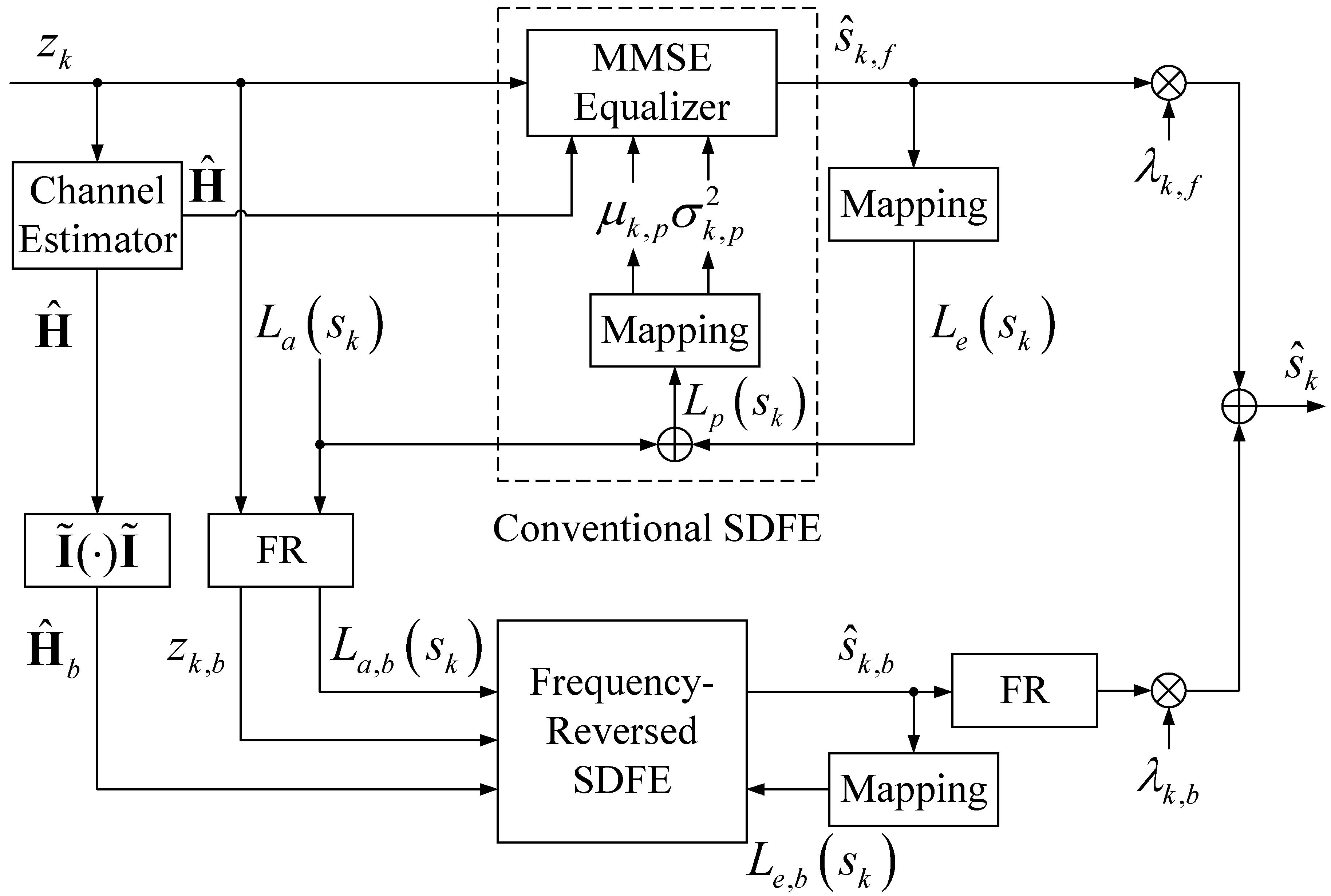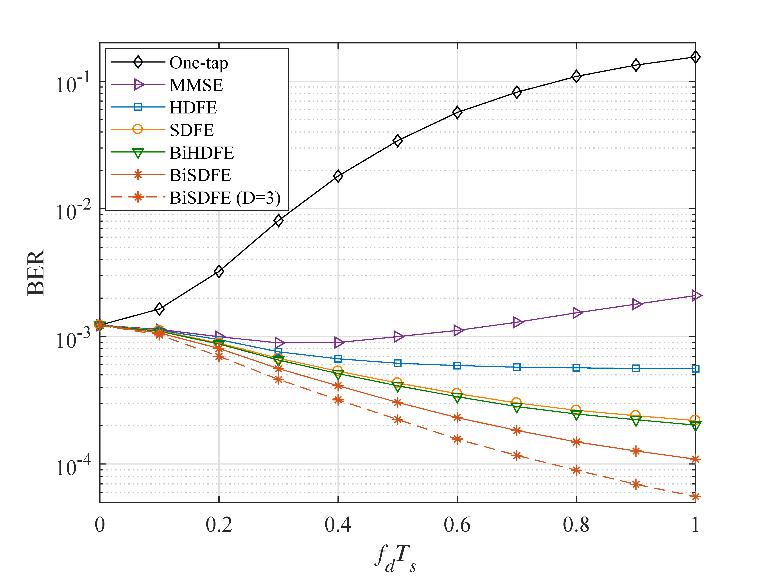The orthogonal frequency-division multiplexing (OFDM) technology could effectively combat the multipath effect of communication channels. However, it is very sensitive to Doppler Effect. In large-Doppler-spread environments, the orthogonality between the subcarriers of OFDM systems would be destroyed and inter-carrier interference would arise. This phenomenon could seriously affect the symbol detection and subsequent channel decoding process, thereby increasing the bit error rate (BER) of the system.
In order to solve these problems above, researchers from the Institute of Acoustics of the Chinese Academy of Sciences (IACAS) proposed a bidirectional soft-decision feedback equalizer (BiSDFE) for OFDM systems.
Inspired by the bidirectional equalization algorithm for single-carrier communications, researchers took advantages of a conventional single-direction soft-decision feedback equalizer (SDFE) to equalize the received signal. Then, by performing the frequency-reversal operation to the demodulated symbols and estimated channel matrix, they derived the frequency-reversed SDFE. Finally, they weighted the soft symbols output by the two equalizers and combined them to obtain the final equalizer output.
Since the correlation between the noise and error position in the outputs of the two equalizers was low and the correlation of the estimated symbols was high, the weighted combining operation could obtain bidirectional diversity gain and reduce the error propagation problem in single-direction SDFE, thereby improving the bit error rate (BER) performance of the system (Figure 1).
The BER performance of the proposed BiSDFE was compared with the existing OFDM equalizers by simulation. The results showed that it could obtain better BER performance under all signal-to-noise ratio (SNR) (Figure 2). Moreover, its advantage was more obvious in channels with large-Doppler-spread environments, such as underwater acoustic channels (Figure 3). In terms of computational complexity, the BiSDFE was on the same order of magnitude as the single-direction SDFE.
The BiSDFE reveals the potential of OFDM technology, and provides a possible solution for its application in large-Doppler-spread scenarios such as mobile underwater acoustic communication.
The research, published online in the journal IEEE Wireless Communications Letters, was supported by the National Natural Science Foundation of China(No.61725106).

Figure 1. Block diagram of the BiSDFE for OFDM systems. (Image by IACAS)

Figure 2. BER versus SNR plot. (Image by IACAS)

Figure 3. BER versus normalized Doppler frequency plot. (Image by IACAS)
Reference:
ZHAO Shiduo, YAN Shefeng, XI Junyi. Bidirectional soft-decision feedback equalization for OFDM systems. IEEE Wireless Communications Letters, 2020, Early Access. DOI: 10.1109/LWC.2020.2988659.
Contact:
ZHOU Wenjia
Institute of Acoustics, Chinese Academy of Sciences, 100190 Beijing, China
E-mail: media@mail.ioa.ac.cn


